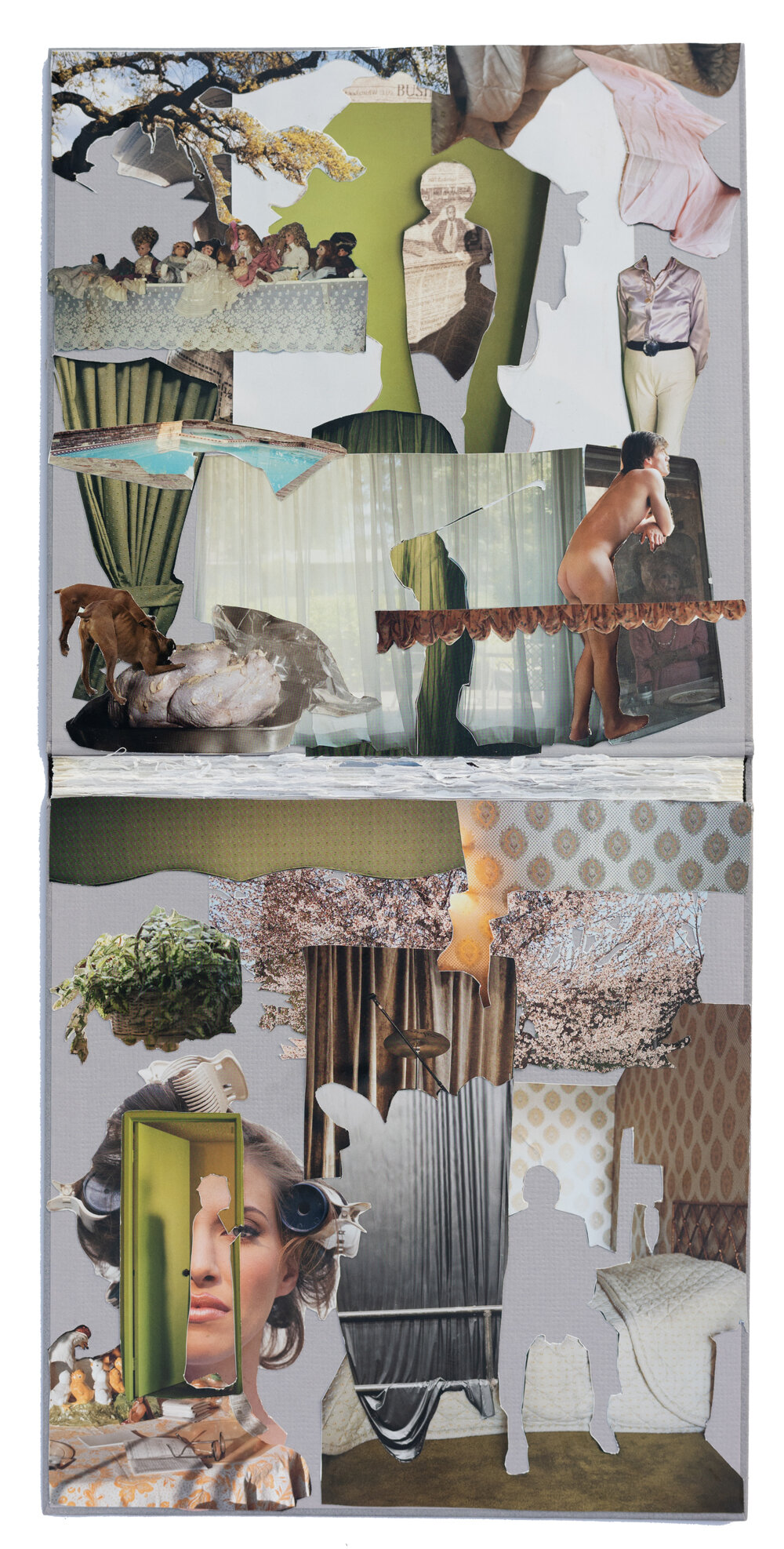Exhibition Review: SCUMB Manifesto by Justine Kurland
Gypsies, 2020 © Justine Kurland
Presented by Higher Pictures Generation at the modest Minus Space in Dumbo, Brooklyn, Justine Kurland's latest exhibition, SCUMB Manifesto, endeavors to complete a mission first declared over fifty years ago.
In 1967, writer and radical feminist Valerie Solanas sold her SCUM Manifesto on the streets of Greenwich Village for one dollar (two dollars for men). Solanas made her charge clear: "SCUM (Society for Cutting Up Men) [...] will eliminate through sabotage all aspects of society not relevant to women (everything)." As SCUM's founder and sole member, Solanas was literal in her intent — she infamously shot Andy Warhol at his Factory in 1968, rupturing his internal organs and leaving him declared dead. Only by some miracle did he survive.
With the addition of a "B," Justine Kurland's ‘Society for Cutting Up Men's Books’ is an experiment as much as it is an act of protest. Drawing on her formal education, Kurland took from her impressive personal library of photography books — ninety-nine percent of which honored white men — and created something new. Alphabetically, working from Eugène Atget to Edward Weston, Kurland slashed, cut, and pasted visual excerpts from each book onto their respective endpapers, crafting a riff on matriarchal utopia repurposed from artifacts of the male gaze. The work is a "psychic spring cleaning," Kurland asserted. "[I'm] literally clearing space on my shelves and in my brain."
Katherine Avenue, 2019 © Justine Kurland
Back in 1968, when Valerie Solanas turned herself into the police, she reportedly alleged that Warhol had "too much control in [her] life." With SCUMB, Kurland rejects the influence of men over her own life and art.
How does one free themselves from the command of institutionalized white male power? The answer for Kurland is a tactile reclamation.
"The point of these collages,” she said in a recent interview,“Is to annihilate the influence of these men who were introduced to me through my schooling and reinforced by museums, galleries, and publications."
Parodic, kitschy, and often humorous in nature, Kurland's collages make no allusion to their original sources, not even in the works' captions. They are reclamations, attempts at offsetting the classic narratives of authority. Predictably, women's bodies dominate the collages, but Kurland repossesses the female form. In "Untitled, (MoMA)," Kurland uses scraps of the photographed bodies--skin, hair, and limbs--to form new female silhouettes. Each face, made from many different faces, lacks eyes — a disclaimer of the objectifying and often impersonal male gaze.
89/90, 2021 © Justine Kurland
Collage has been a staple of feminist protest art since Dadaist Hannah Höch's "Cut the Kitchen Knife”. And, in fact, the spirit of Dadaism is evident in SCUMB Manifesto. Dada strove to destroy traditional values and create new art to replace the old. But Justine Kurland doesn't want to burn all her bridges. Before making the work available to collectors, Kurland offered to sell the works to the original photographers, as an olive branch.
None of the men have taken the offer.
SCUMB Manifesto is on display until May 1, 2021, a hop, skip, and two jumps from the Brooklyn Bridge. Kurland's latest exhibition is wonderfully intimate, quietly avant-garde, and worth the trip.









